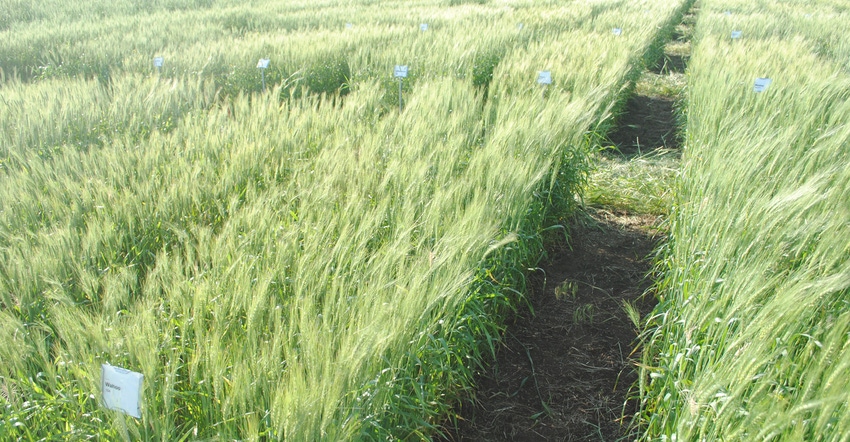
Based in Lincoln since its inception in the 1940s, the University of Nebraska State Variety Testing Program is moving west. Once known as the Outstate Testing Program, the structure has changed over the past few years.
The primary team now is located in western Nebraska at the High Plains Agricultural Laboratory near Sidney, where it is led by Cody Creech, Nebraska Extension dryland cropping systems specialist, and Amanda Easterly, research assistant professor. Brian Maust, agronomy research technologist in Lincoln, manages trial sites in the eastern half of the state.
Easterly says the program was established almost 80 years ago by an act of the Nebraska Legislature to assist farmers in selecting the best varieties and hybrids for their farms.
“The goal was, and is, to provide unbiased variety testing that covers the wide range of growing conditions in Nebraska,” she says. “We have reports for a number of crops, especially wheat, going back to those first years of the testing program.”
Seed companies, plant breeders and agronomists select varieties and hybrids they would like to test each year, with the testing program funded by fees collected for each entry.
“We conduct the trials using specialized research equipment to plant replicated plots precisely, collect data throughout the growing season, then use a small plot combine to harvest and measure final yields," Easterly says. "Data is analyzed using modern statistical tools and methods. We are fortunate enough to have support from UNL to make necessary updates in the past couple of years to the program to increase our efficiency and accuracy.”
She says it takes a team of technicians, researchers and students working together to conduct the trials.
Other crops tested
Over the past few years, the predominant crop being tested has been winter wheat, with 15 wheat trials across the state. But in the past two years, researchers have reestablished testing in corn, spring wheat and grain sorghum.
“We publish the results of our trials twice yearly, and we also host field tours for farmers and seed professionals to see the varieties in person during the growing season,” Easterly says. “We collaborate with other scientists who lead testing in crops such as forages, dry beans, field peas and proso millet.”
In the past, sunflowers and other small grains such as oats and barley have been tested in the program.
Moving the variety testing program west seems to be a natural fit into the Dryland Cropping Systems Program, because of that program’s recent equipment upgrades and support personnel located in Sidney and Lincoln. Creech and Easterly hope to build the program into a regional leader that can help leverage new research opportunities.
“The most critical component of the variety testing program is getting the data to farmers in a timely fashion and in a format they can use,” Creech says. “When this move was being considered, one question that was continually raised was how a statewide testing network could be leveraged for new research. We have already seen success in this endeavor.
"In winter wheat, we added intensive management trials in Mead and Sidney. In spring wheat, we partnered with Ardent Mills to explore baking and milling qualities. In grain sorghum, we teamed up with the Nebraska Sorghum Board and a few seed companies to explore food-grade sorghum and how growing environments across the state might alter certain sought-after characteristics.”
Variety selection tool
Along with a reinvention of the program has come collaboration among a team of computer scientists at UNL working to develop an interactive variety selection website.
“The website is in the testing and development stage for winter wheat data and is not yet available for public use,” Easterly says. “We hope to expand it to other crops in the future. This tool will help farmers and agronomists examine the results of our variety trials more specifically to their needs and environments.”
For researchers, the wealth of data in the program is seen as an opportunity to look at long-term trends and to evaluate how varieties and farming practices have evolved since the 1940s. The program also provides hands-on opportunities to train graduate and undergraduate students as the next generation of ag scientists, Easterly says.
Learn more online at cropwatch.unl.edu/varietytest.
About the Author(s)
You May Also Like






